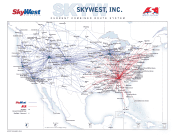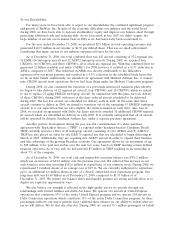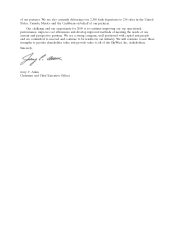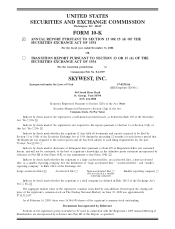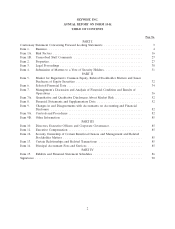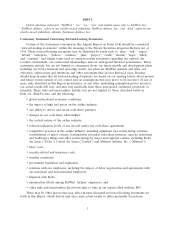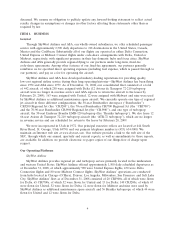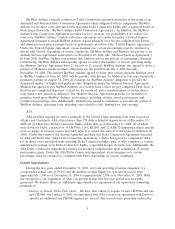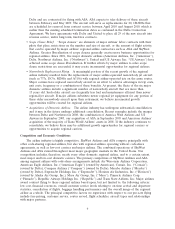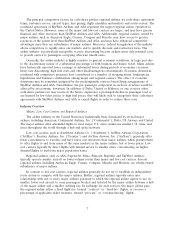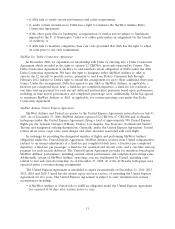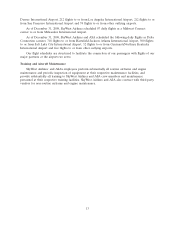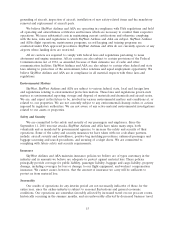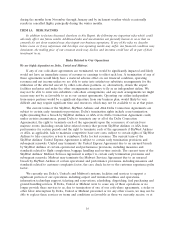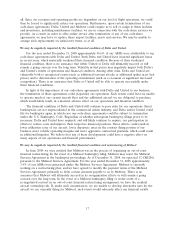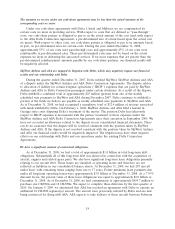SkyWest Airlines 2008 Annual Report Download - page 12
Download and view the complete annual report
Please find page 12 of the 2008 SkyWest Airlines annual report below. You can navigate through the pages in the report by either clicking on the pages listed below, or by using the keyword search tool below to find specific information within the annual report.Growth of the Regional Airline Industry
According to the Regional Airline Association, the regional airline sector of the airline industry
experienced compounded annual passenger growth of 9.5% between 2003 and 2007. We believe the
growth of the number of passengers using regional airlines and the revenues of regional airlines during
the last decade is attributable to a number of factors, including:
• Regional airlines work with, and often benefit from the strength of, the major airlines. Since
many major airlines have incorporated increased use of regional airlines into their future growth
strategies, many regional airlines have expanded, and may continue to expand, with the major
airlines they serve.
• Regional airlines tend to have a more favorable cost structure and leaner corporate structure
than many major airlines. Many regional airlines were founded in the midst of the highly
competitive market that developed following deregulation of the airline industry in 1978.
• Many major airlines have determined that an effective method for retaining customer loyalty and
maximizing system revenue, while lowering costs, is to outsource shorter, low-volume routes to
more cost-efficient regional airlines flying under the major airline’s code and name.
• Regional airlines have replaced many smaller turboprop planes with 32 to 110-seat regional jets.
Such regional jets feature cabin class comfort, low noise levels and speed similar to the 120-seat
plus aircraft operated by the major airlines, but are cheaper to acquire and operate because of
their smaller size. We believe the increased use of regional jets has led, and may continue to
lead, to greater public acceptance of regional airlines.
Relationship of Regional and Major Airlines
Regional airlines generally enter into code-share agreements with major airlines, pursuant to which
the regional airline is authorized to use the major airline’s two-letter flight designator codes to identify
the regional airline’s flights and fares in the central reservation systems, to paint its aircraft with the
colors and/or logos of its code-share partner and to market and advertise its status as a carrier for the
code-share partner. For example, SkyWest Airlines flies out of Chicago (O’Hare), Denver, Los Angeles
and San Francisco as United Express and out of Salt Lake City as Delta Connection and Milwaukee as
Midwest Connect. ASA operates as Delta Connection out of Atlanta and Cincinnati. In addition, the
major airline generally provides services such as reservations, ticketing, ground support and gate access
to the regional airline, and both partners often coordinate marketing, advertising and other
promotional efforts. In exchange, the regional airline provides a designated number of low-capacity
(usually between 30 and 70 seats) flights between larger airports served by the major airline and
surrounding cities, usually in lower-volume markets.
The financial arrangements between the regional airlines and their code-share partners usually
involve contractual, or fixed-fee payments based on the flights or a revenue-sharing arrangement based
on the flight ticket revenues, as explained below:
•Fixed-Fee Arrangements. Under a fixed-fee arrangement, the major airline generally pays the
regional airline a fixed-fee for each departure, with additional incentives based on completion of
flights, on-time performance and baggage handling performance. In addition, the major and
regional airline often enter into an arrangement pursuant to which the major airline bears the
risk of changes in the price of fuel and other such costs that are passed through to the major
airline partner. Regional airlines benefit from a fixed-fee arrangement because they are sheltered
from most of the elements that cause volatility in airline earnings, including variations in ticket
prices, passenger loads and fuel prices. However, regional airlines in fixed-fee arrangements do
not benefit from positive trends in ticket prices, passenger loads or fuel prices and, because the
major airlines absorb most of the risks, the margin between the fixed-fees for a flight and the
8


